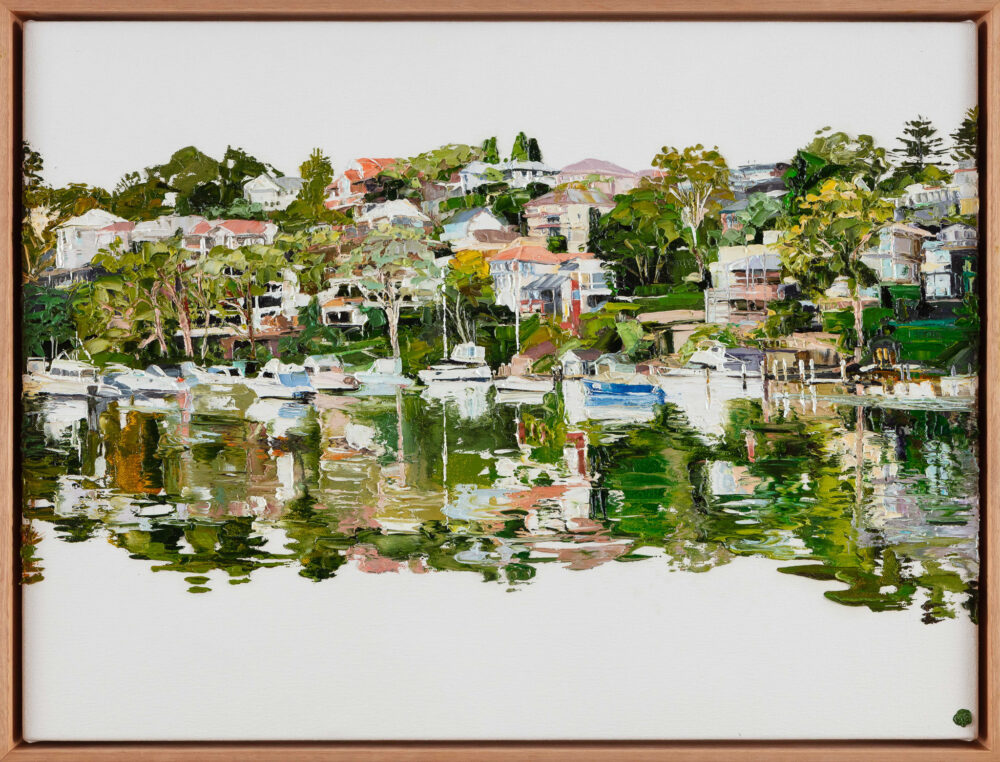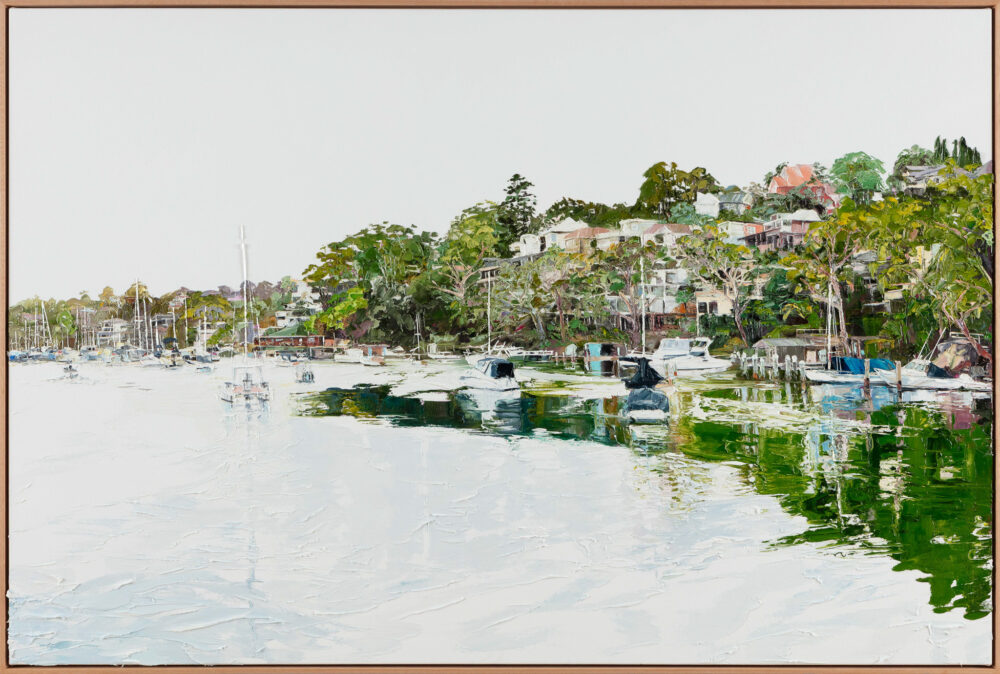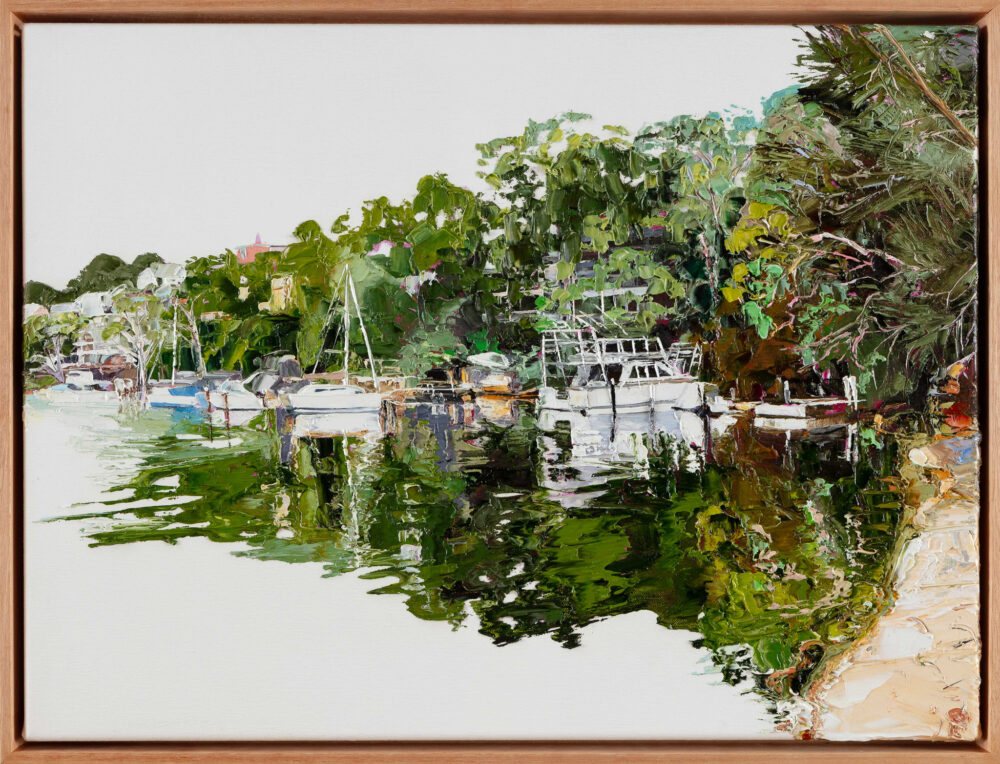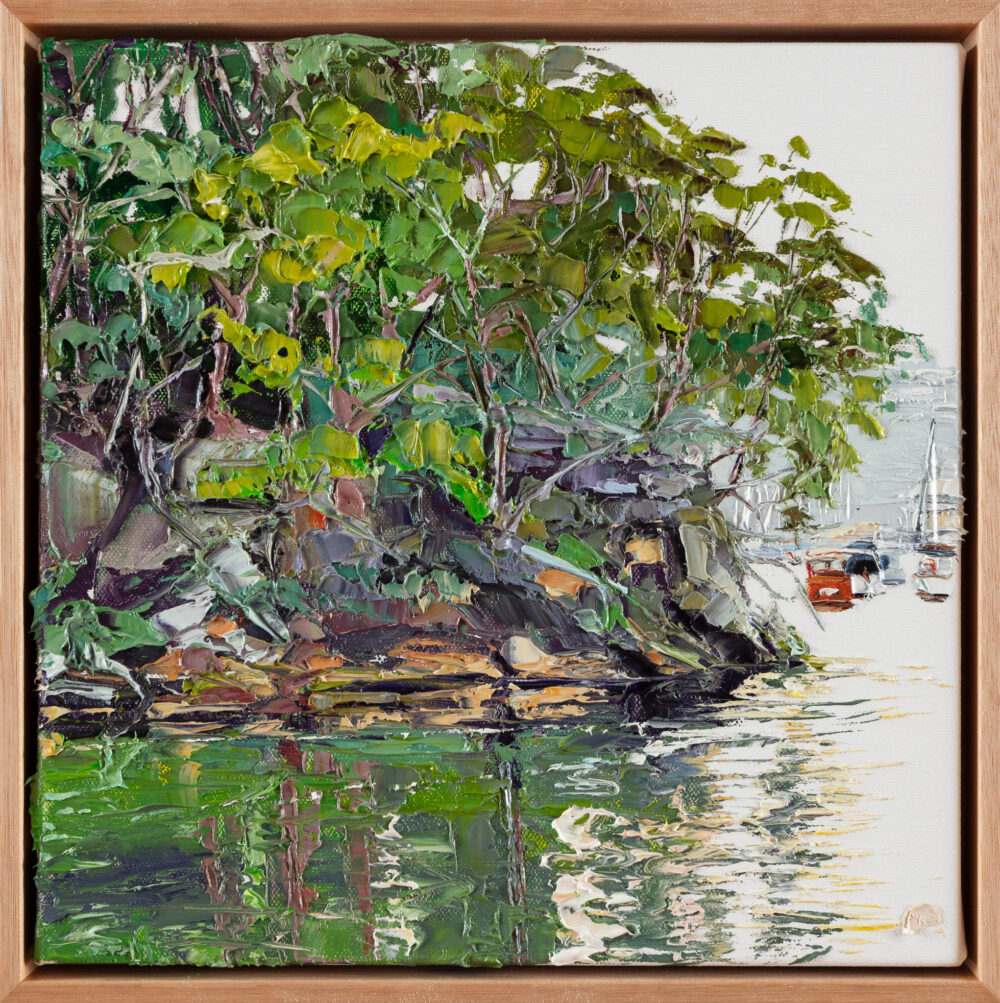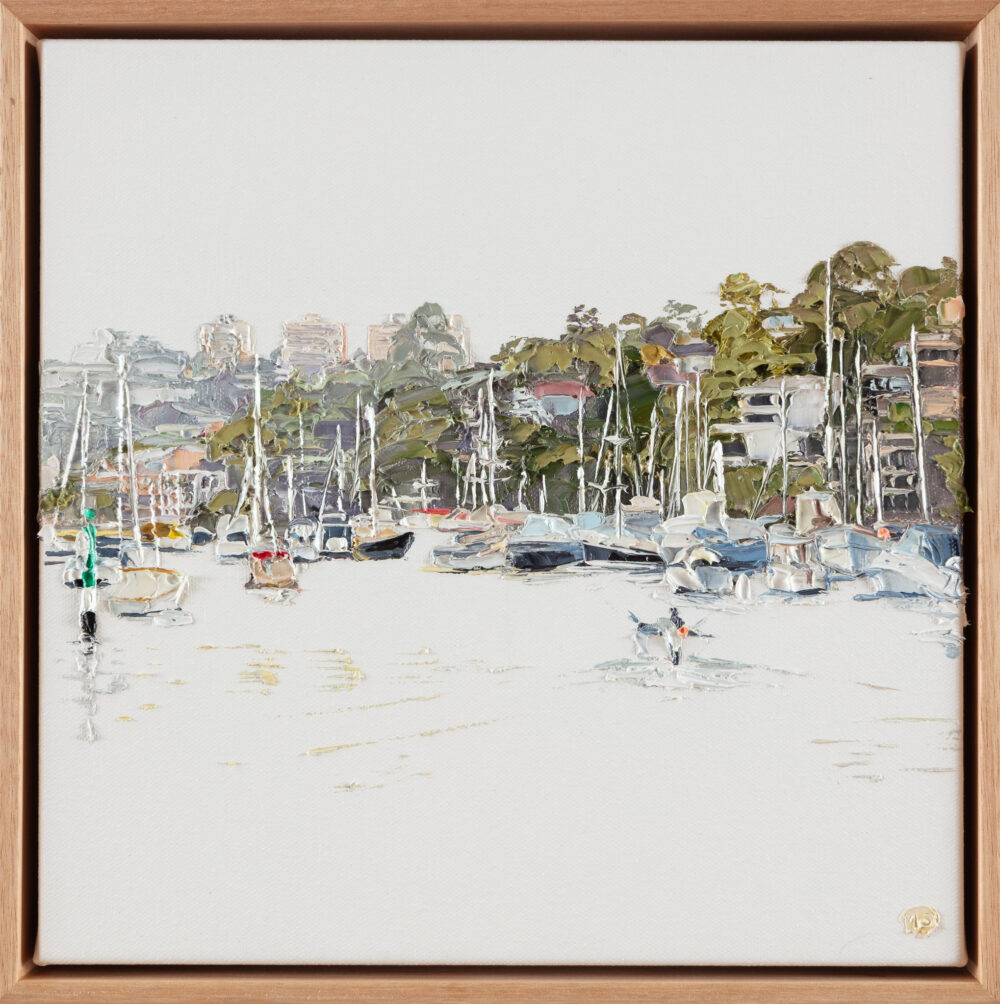The Sound of Phthalo
- Miranda Joy Summers
- 22 May—22 Jun 2025
- Download now
“Sky bright & colourless with promise of day, contests the cool air and dark shadows. Houses, partially hidden, stand tall—quietly watchful as boats, tension broken, wiggle with windows winking. Trees, their branches dipping, anticipate sun’s first tickle. And in waters green all this is seen, a moment, reflected, remembered, and held with in the Phthalo”.
Using a painting knife and oil, Miranda Joy Summers captures the essence of water and land, the interplay between soluble and solid matter. Her knife strokes are deliberate and expressive, shaping the scene through tone and form. She emphasises the dynamic interplay between negative and positive space, creating a unique dialogue between the foreground and the perceived distance, effectively reducing spatial separation. This technique challenges conventional perceptions of landscape painting, inviting viewers to engage with both the foreground and distance in a similarly subjective way.
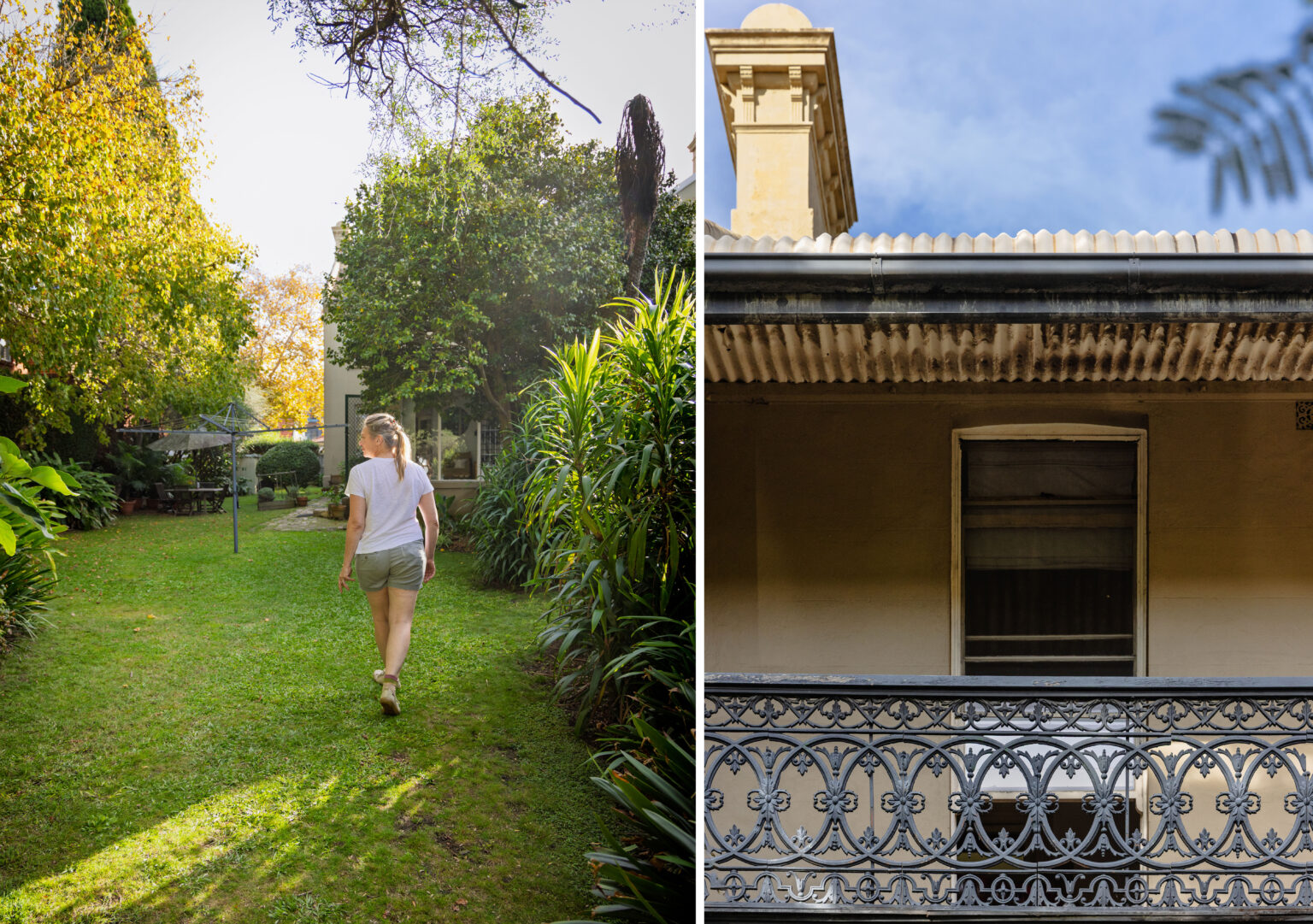

What led you down the painterly path?
I’ve always painted, but there came a moment when I felt compelled to take it more seriously. When I met my now-husband, I told him, on our very first date, that I was an artist. What I didn’t mention was that I hadn’t painted anything of note at that point. But I said it with conviction, because I knew deep down that it was true, if a little futuristic.
That declaration became a turning point. I realised I wasn’t just speaking a hope, I was naming a path I wanted to walk. From there, painting through a stop start fashion at first, gradually found itself under a spot light in my life.
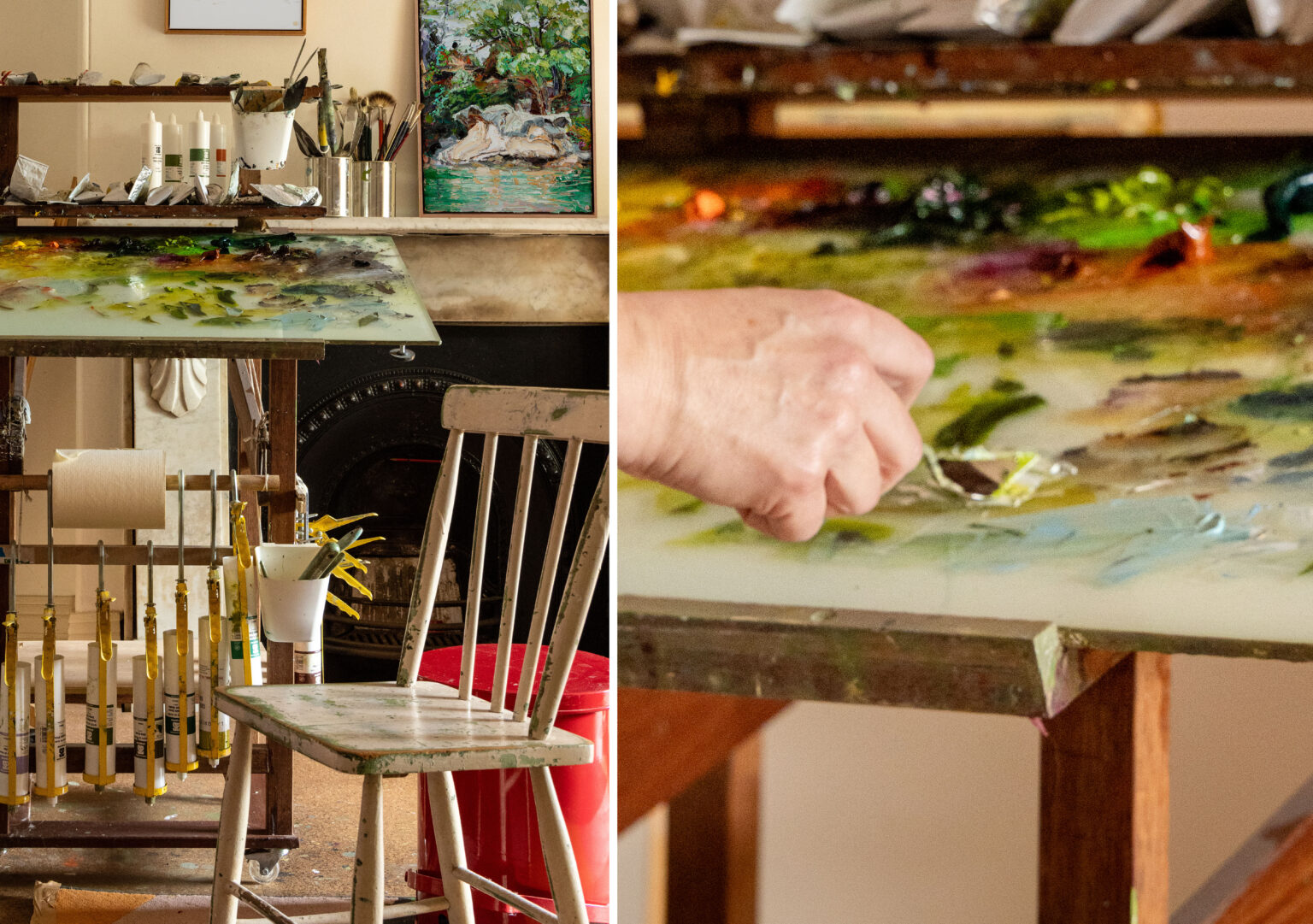

What compelled you to paint the Middle Harbour landscape?
Middle Harbour is my most immediate access to the water, where bushland meets the harbour in a way that feels both wild and intimate. There are walking tracks around it where, despite being in the middle of Sydney, you can feel a million miles away. That sense of quiet seclusion was my starting point.
But what began to captivate me wasn’t just the natural beauty, it was the way civilisation peeks through the bush. I became fascinated by the human impulse to live right on the edge of the land. Houses perched on rocks, built on poles, suspended or tucked deep into the landscape. Every kind of dwelling, each one a wish made real. A home among the gum trees. A window with a view.
As I painted, I began to see these dwellings not as intrusions, but as extensions of the terrain. They started to morph into the rocks, blending with the earth, sometimes even borrowing its materials. Built from stone, shaped by engineering, and often camouflaged by reflection, windows catching the trees, roofs echoing the contours.
And the water – the water sees everything. It reflects it all back, trees, sky, dwellings, the shifting light. It began to feel, to me, like a conscious presence. An all-seeing body that holds the entire scene on its surface and its depths. That became the emotional core of the work.
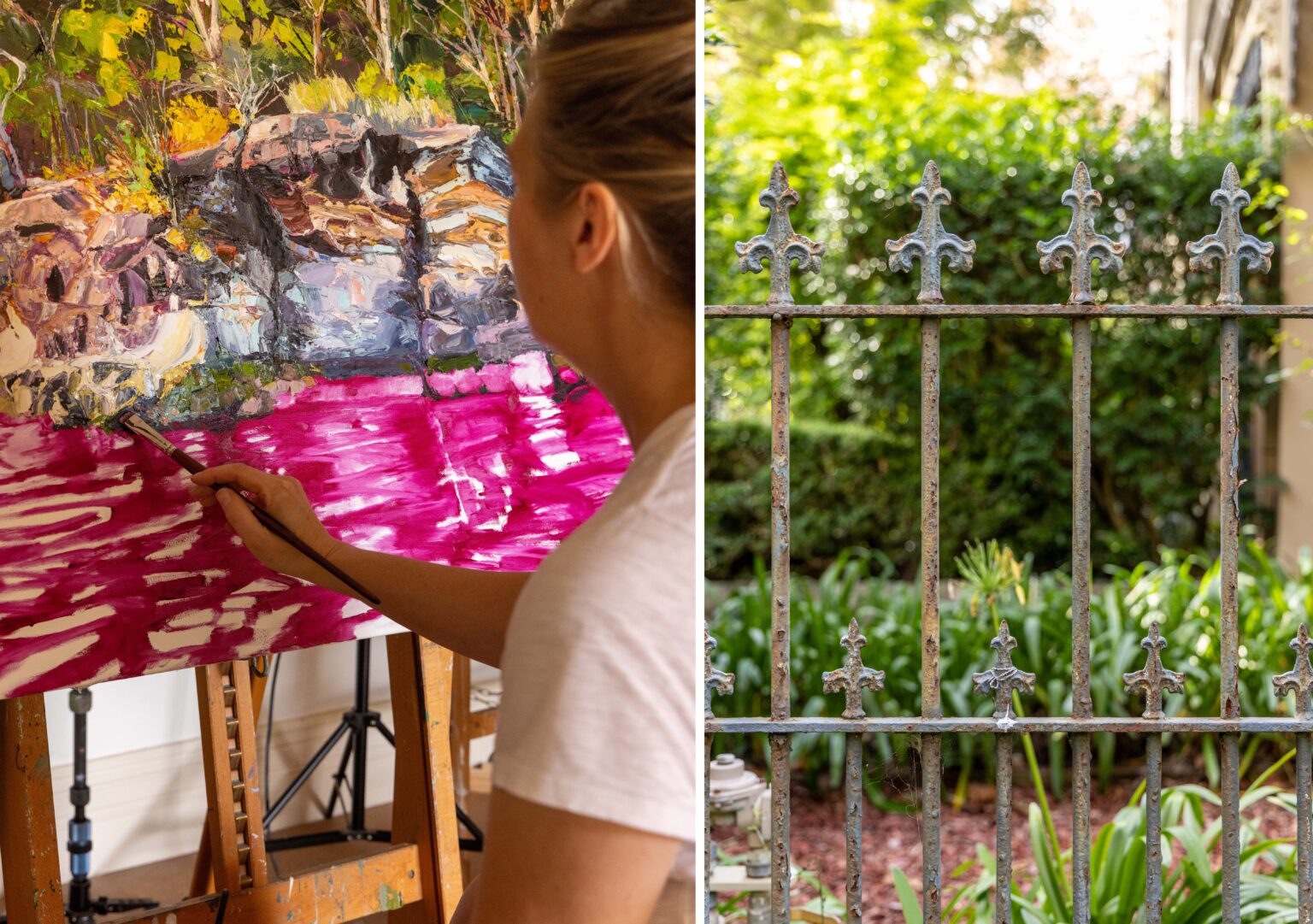
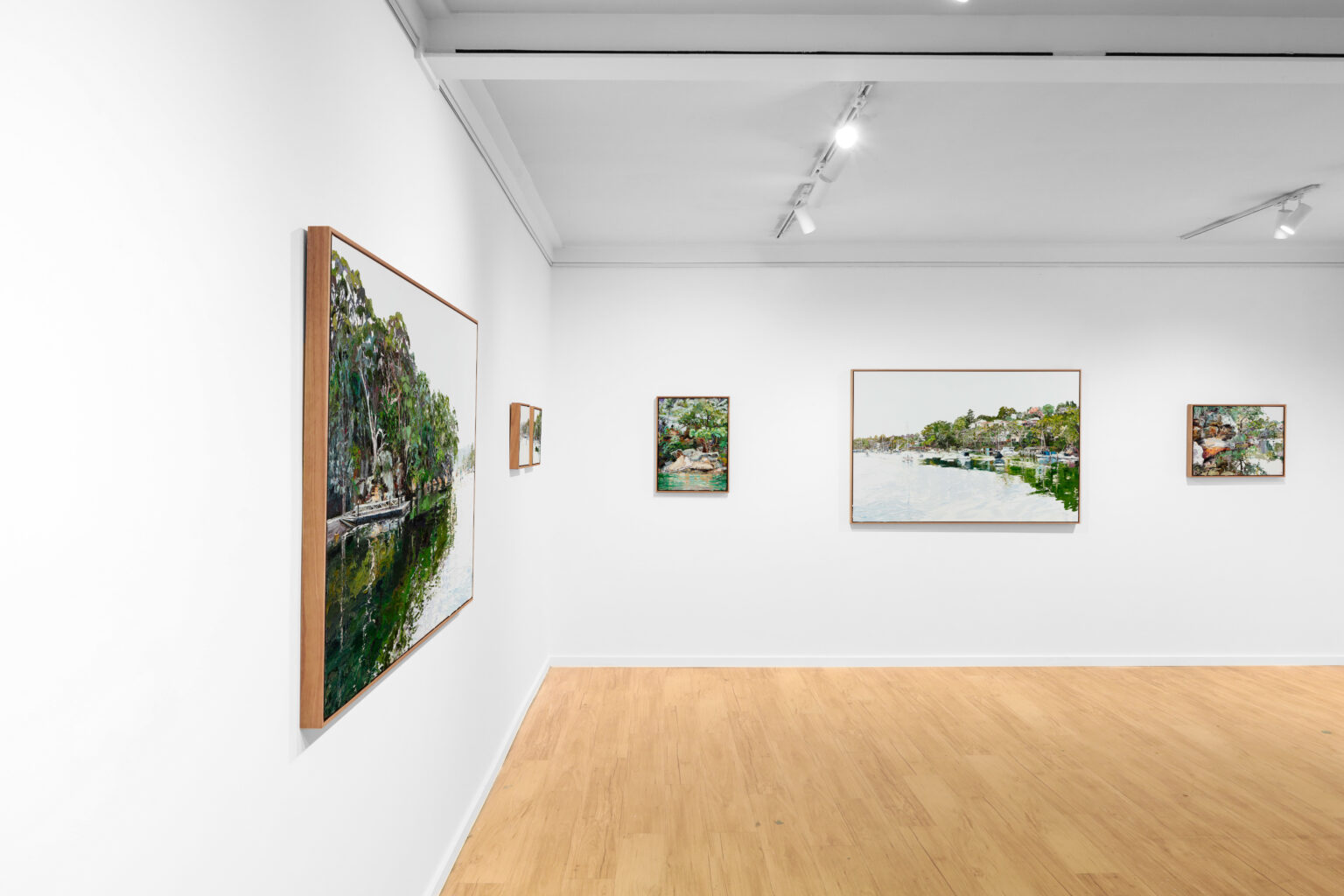
With your works, do you paint from life, from photos or from memories? Do you construct a scene/ vignette in your studio, or do you prefer incidental scenes that you come across?
For me, absorption of place is everything. However you approach it, the experience of the landscape has to permeate your whole being, it has to get into your soul. I absorb location through all my senses, especially on bush walks. I take endless photographs with my Canon & iPhone, capturing both the expected and the incidental.
Back in the studio, I study those images, manipulate them, play with light and shadow, draw directly onto the photos using my iPad. Then I return to the site, revisit the atmosphere, take more photographs, and refine the emerging idea. It’s a layered process of memory, observation, and re-immersion.
Once I’ve sketched out a few compositions based on those original images, manipulated to reflect the essential character of the landscape as I feel it, I begin painting. The final work is grounded in reality, but distilled through repeated looking, sensing, and imagining.
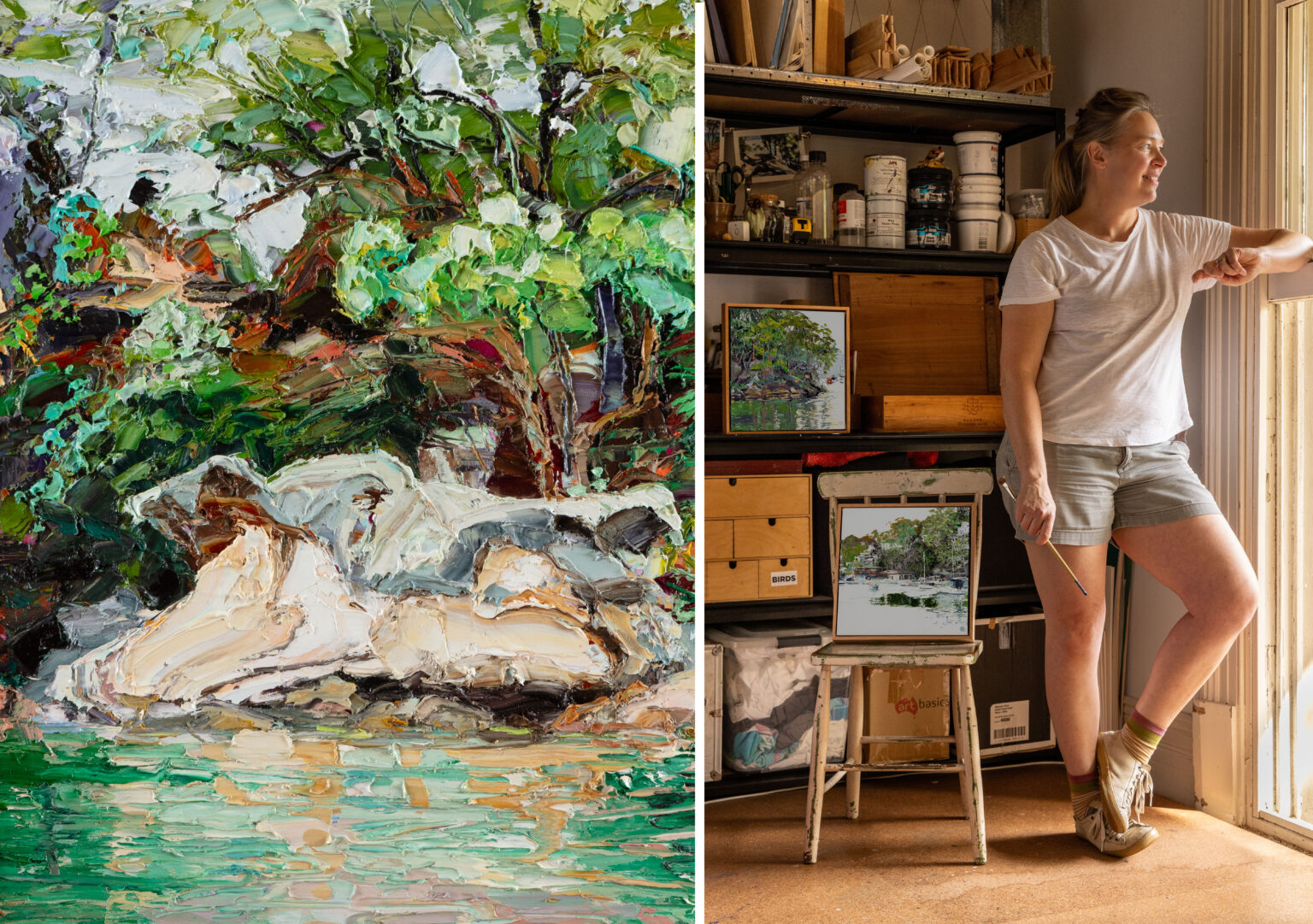
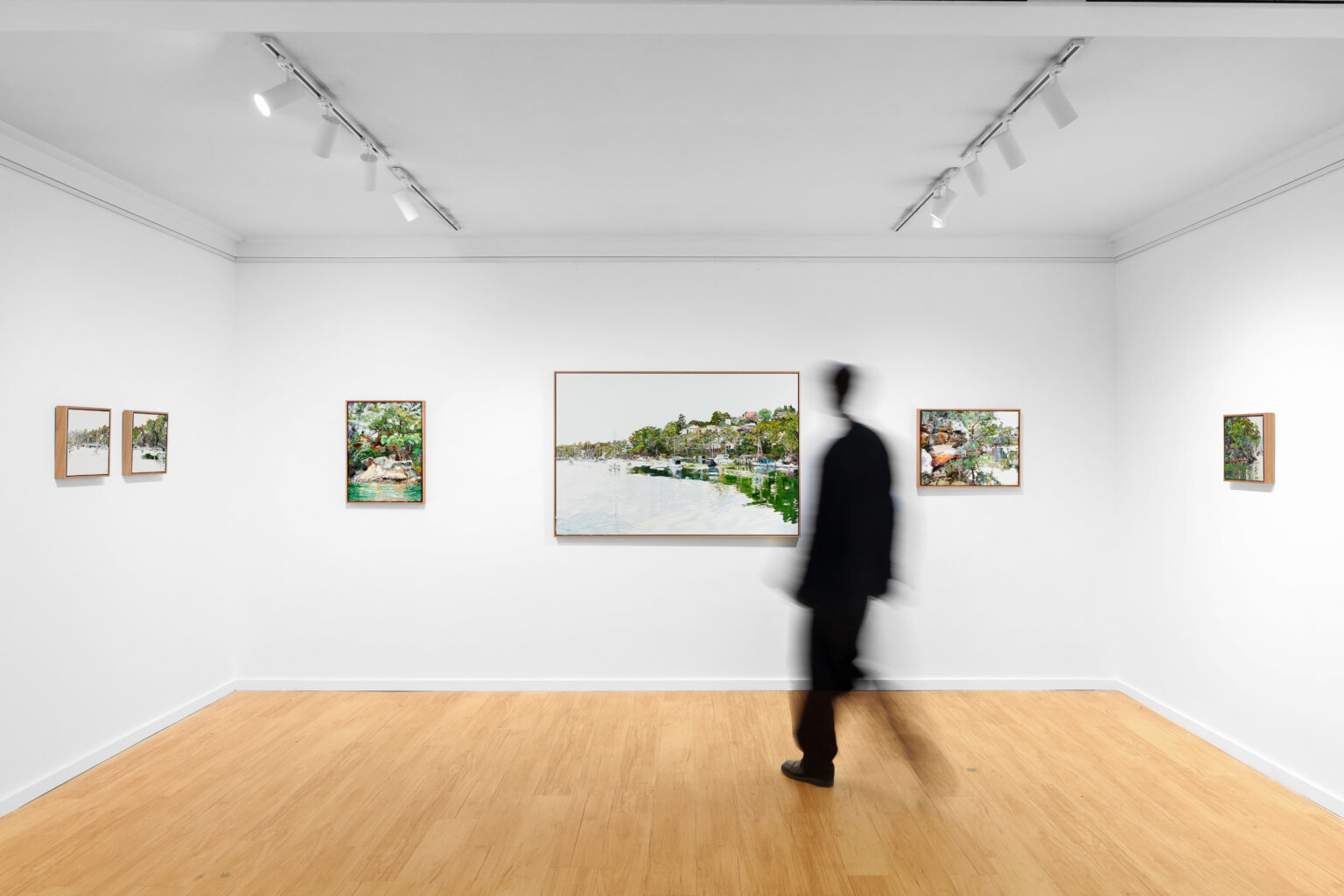
Can you describe the importance of the title for this show – the significance of the phthalo colour family to your work?
The Sound of Phthalo—those words evoke exactly the space I’ve tried to communicate in paint. The depth of the green, especially as it appears in the shadowy parts of the water, feels still, quiet, and profound. It suggests not just the absence of sound, but a presence of calm, of reflection, of something all-knowing.
In this work, the water has become a kind of witness, an all-seeing, all-holding force. And in its green-ness, in those phthalo depths, there’s a deep understanding of peace. That colour holds the mood of the whole series: contemplative, immersive, and quietly powerful.










